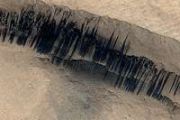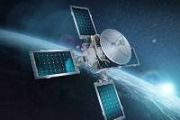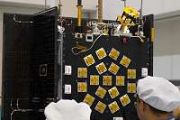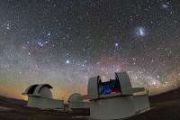
Copernical Team
Space Machines Company unveils Optimus Viper rapid response spacecraft
 Space Machines Company (SMC) has introduced Optimus Viper, a rapid-response spacecraft designed to protect critical space assets and deliver high-fidelity intelligence. This cutting-edge platform operates within 10 kilometers of target satellites, providing unprecedented insights and actionable intelligence for space infrastructure security.
The launch of Optimus Viper marks a significant
Space Machines Company (SMC) has introduced Optimus Viper, a rapid-response spacecraft designed to protect critical space assets and deliver high-fidelity intelligence. This cutting-edge platform operates within 10 kilometers of target satellites, providing unprecedented insights and actionable intelligence for space infrastructure security.
The launch of Optimus Viper marks a significant Revolutionizing space-based thermal systems: AFRL Spirral Launch On SPX-31
 The Air Force Research Laboratory, or AFRL, launched the Space Power InfraRed Regulation and Analysis of Lifetime, or SPIRRAL, experiment, Nov. 4, 2024. SPIRRAL, flown by AFRL through the DOD Space Test Program, will characterize the performance of Variable Emissivity Materials, or VEMs, an approach toward solving thermal challenges for space vehicles while on-orbit.
VEMs are surface finis
The Air Force Research Laboratory, or AFRL, launched the Space Power InfraRed Regulation and Analysis of Lifetime, or SPIRRAL, experiment, Nov. 4, 2024. SPIRRAL, flown by AFRL through the DOD Space Test Program, will characterize the performance of Variable Emissivity Materials, or VEMs, an approach toward solving thermal challenges for space vehicles while on-orbit.
VEMs are surface finis New study uncovers variety in Arctic Ocean hydrothermal vent systems
 A recent investigation into Earth's northernmost hydrothermal system reveals a greater diversity of vent styles than previously known, offering critical insights into their origins and potential global impacts.
The findings, detailed in the journal article "Ultramafic-influenced submarine venting on basaltic seafloor at the Polaris site, 87N, Gakkel Ridge," published in Earth and Planetary
A recent investigation into Earth's northernmost hydrothermal system reveals a greater diversity of vent styles than previously known, offering critical insights into their origins and potential global impacts.
The findings, detailed in the journal article "Ultramafic-influenced submarine venting on basaltic seafloor at the Polaris site, 87N, Gakkel Ridge," published in Earth and Planetary New simulation method reveals deeper insights into Earths core
 How does Earth produce its magnetic field? While the general mechanism of the geodynamo effect is understood, critical details remain unresolved. A collaboration of scientists from the Center for Advanced Systems Understanding (CASUS) at Helmholtz-Zentrum Dresden-Rossendorf (HZDR), Sandia National Laboratories, and the French Alternative Energies and Atomic Energy Commission (CEA) has developed
How does Earth produce its magnetic field? While the general mechanism of the geodynamo effect is understood, critical details remain unresolved. A collaboration of scientists from the Center for Advanced Systems Understanding (CASUS) at Helmholtz-Zentrum Dresden-Rossendorf (HZDR), Sandia National Laboratories, and the French Alternative Energies and Atomic Energy Commission (CEA) has developed How to find a comet before it hits Earth
 Q: How do you find a comet that could pose a threat to Earth but hasn't passed our planet in the last 200 years or more?
A: You look for its footprint.
This is the basis of research led by Samantha Hemmelgarn, a first-year doctoral student in Northern Arizona University's Department of Astronomy and Planetary Science. In a study published in Planetary Science Journal in November, she
Q: How do you find a comet that could pose a threat to Earth but hasn't passed our planet in the last 200 years or more?
A: You look for its footprint.
This is the basis of research led by Samantha Hemmelgarn, a first-year doctoral student in Northern Arizona University's Department of Astronomy and Planetary Science. In a study published in Planetary Science Journal in November, she Massive eruptions did not trigger dinosaur extinction
 Massive volcanic eruptions in India, once theorized as a potential cause of dinosaur extinction, likely played a minimal role in their demise, according to new research by climate scientists at Utrecht University and the University of Manchester. Their findings suggest that while these eruptions caused a temporary cooling period, their climatic effects had dissipated thousands of years before th
Massive volcanic eruptions in India, once theorized as a potential cause of dinosaur extinction, likely played a minimal role in their demise, according to new research by climate scientists at Utrecht University and the University of Manchester. Their findings suggest that while these eruptions caused a temporary cooling period, their climatic effects had dissipated thousands of years before th China's space journey continues apace
 The first-ever samples retrieved from the moon's far side, an iconic feat achieved by China's most recent lunar expedition, Chang'e 6, were on display at the 15th China International Aviation and Aerospace Exhibition, which took place in Zhuhai, Guangdong province, from Nov 12 to 17.
This was the first time the valuable lunar substances had been shown to the public since they were brought
The first-ever samples retrieved from the moon's far side, an iconic feat achieved by China's most recent lunar expedition, Chang'e 6, were on display at the 15th China International Aviation and Aerospace Exhibition, which took place in Zhuhai, Guangdong province, from Nov 12 to 17.
This was the first time the valuable lunar substances had been shown to the public since they were brought Airbus US Space and Defense partners with Aerostar to advance stratospheric ISR technologies
 Airbus U.S. Space and Defense and Aerostar successfully completed a joint Internal Research and Development (IRAD) stratospheric test flight as part of their Cooperative Research and Development Agreement (CRADA). The test demonstrated the use of satellite backhaul technologies on high-altitude platforms for enhanced Intelligence, Surveillance, and Reconnaissance (ISR) capabilities.
The mi
Airbus U.S. Space and Defense and Aerostar successfully completed a joint Internal Research and Development (IRAD) stratospheric test flight as part of their Cooperative Research and Development Agreement (CRADA). The test demonstrated the use of satellite backhaul technologies on high-altitude platforms for enhanced Intelligence, Surveillance, and Reconnaissance (ISR) capabilities.
The mi Old Moon's young crust mystery explained
 Scientists have long debated the Moon's true age, with estimates varying by hundreds of millions of years. While some studies suggest the Moon formed 4.35 billion years ago, others place its origin at 4.51 billion years. Adding to the complexity, most lunar rock samples point to a younger age, but a handful of ancient zircon crystals appear much older. Researchers now propose that the Moon's cru
Scientists have long debated the Moon's true age, with estimates varying by hundreds of millions of years. While some studies suggest the Moon formed 4.35 billion years ago, others place its origin at 4.51 billion years. Adding to the complexity, most lunar rock samples point to a younger age, but a handful of ancient zircon crystals appear much older. Researchers now propose that the Moon's cru NASA payload to study heat flow beneath the Moon's surface
 Earth's closest celestial neighbor, the Moon, has seen only 5% of its surface directly explored by humans. Decades of study, including NASA's Apollo-era missions and the 2011-2012 GRAIL (Gravity Recovery and Interior Laboratory) mission, culminated in the discovery in 2023 of a liquid outer core surrounding a solid inner core within the Moon.
As NASA's Artemis program intensifies preparati
Earth's closest celestial neighbor, the Moon, has seen only 5% of its surface directly explored by humans. Decades of study, including NASA's Apollo-era missions and the 2011-2012 GRAIL (Gravity Recovery and Interior Laboratory) mission, culminated in the discovery in 2023 of a liquid outer core surrounding a solid inner core within the Moon.
As NASA's Artemis program intensifies preparati 




























